What You Need to Know Before Starting Your Renovation
Styling Surburbia. A bright, cozy living room featuring a large stone fireplace with a rustic wood mantel, adorned with an arched mirror and greenery. Built-in shelves on either side are decorated with books, plants, and artwork, while two small dogs nap on cushions nearby. A ceiling fan with wooden blades hangs above, and a wicker tray with a plant sits on the coffee table.
Renovating your home is a big decision, especially for empty nesters and retirees looking to refresh their space and create a functional, beautiful environment. However, taking on a renovation project without the guidance of a professional interior designer can lead to costly mistakes, overwhelming stress, and even disagreements with your spouse over design and budget. In this article, we’ll cover the most common renovation mistakes homeowners make without an expert and provide practical solutions to avoid them. Whether you're starting a kitchen remodel, a bathroom renovation, or simply updating your living space, knowing these pitfalls will help you achieve a seamless and stress-free renovation.
Table of Contents
Overview of the Common Renovation Challenges Faced by Homeowners
Mistake 1: Undefined Design Style
Why Defining Your Design Style Is Essential
How to Establish a Clear Vision for Your Home
Pro Tip: Consult an Interior Designer
Mistake 2: Overwhelming Inspiration Without Direction
The Danger of Too Much Inspiration
Streamlining Ideas for Practical Renovation Planning
Mistake 3: Following Trends Blindly
The Risk of Short-Lived Trends
Balancing Trendy Elements with Timeless Features
Mistake 4: Not Considering Existing Features
Integrating Architectural Features Into Your Design
Working with Your Home's Natural Charm
Mistake 5: Lack of a Functional Mood Board
Importance of a Mood Board in Design Planning
Tips for Creating a Cohesive Mood Board
Mistake 6: Misinterpreting Architectural Plans
Common Mistakes When Reading Architectural Plans
How to Bridge the Gap Between Vision and Layout
Mistake 7: Ignoring Material Samples
Why Testing Material Samples Is Crucial
How to Use Samples Effectively in Renovation Planning
Mistake 8: Choosing the Wrong Colors
Factors to Consider When Selecting Colors
The Role of Lighting in Color Choice
Mistake 9: Disagreements with a Spouse Over Money and Style
How Renovations Can Lead to Conflict
Tips for Finding Common Ground
Mistake 10: Emotional Attachment to Personal Items
How to Incorporate Sentimental Items in a Fresh Design
Creative Ways to Repurpose Beloved Pieces
How Decision Fatigue Impacts Renovations
Strategies to Streamline Decision-Making
Mistake 12: Color Preference Conflicts
Resolving Color Conflicts Between Partners
Creating a Balanced Color Palette
Frequently Asked Questions (FAQ)
Why Should I Hire an Interior Designer for My Renovation?
How Do I Choose the Right Design Style for My Home?
What Is a Mood Board, and Why Is It Important?
How Can I Avoid Disagreements with My Spouse During Renovation?
How can I avoid decision fatigue during my renovation?
What are some common renovation mistakes to watch out for?
How can I incorporate sentimental items into my new design?
What should I consider when choosing colors for my home renovation?
Avoiding Common Renovation Mistakes
The Benefits of Hiring an Expert Designer
Contact Julie Ann Rachelle Interiors for a Seamless Renovation Experience
We’d love to hear about your renovation experiences! Have you encountered any of these common mistakes, or do you have any tips to share with fellow readers? Leave a comment below to join the conversation and connect with our community.
Mistake #1: Undefined Design Style
One of the most common mistakes homeowners make is diving into a renovation without first defining their design style. This can result in mismatched themes that leave your home feeling disjointed. Whether you gravitate toward modern minimalism, traditional elegance, or a rustic farmhouse look, it’s essential to establish a clear design direction before making any major decisions. Without a cohesive vision, you may end up with decor that doesn’t complement the rest of your home, making it harder to achieve that “finished” look.
What to Do Instead
Start by creating a vision board, whether digitally through platforms like Pinterest or physically with magazine clippings. Focus on consistent themes that match your home’s architecture and your personal style. For homeowners looking for personalized guidance, working with an interior designer ensures your home flows seamlessly from room to room, aligning with your lifestyle and design goals.
Pro Tip: Consider scheduling a consultation with an interior designer to help refine your design style and create a cohesive plan that avoids costly missteps.
Left: Kira Cole, Photo Credit: Louie Abellera | Right: via TheDailyMail
On the left, labeled 'do,' is a well-decorated living room with coordinated furniture and plants, suggesting a cohesive and stylish space. On the right, labeled 'don't,' is a cluttered and mismatched living room with various furniture styles, conveying a lack of cohesion.
Mistake #2: Overwhelming Inspiration Without Direction
It’s easy to get lost in a sea of inspiration when browsing Pinterest or Instagram. While these platforms are fantastic for sparking creativity, they can also make it hard to focus on a clear direction. Many homeowners become overwhelmed with too many ideas, leading to decision fatigue and a scattered renovation.
What to Do Instead
Limit yourself to a few key inspirations that truly resonate with you. Create a roadmap that identifies must-have features and practical changes based on your lifestyle. Working with a designer can help you translate inspiration into actionable steps, ensuring the end result is both beautiful and functional.
Mistake #3: Following Trends Blindly
Trends come and go, but a home renovation is an investment you’ll want to enjoy for years to come. Following trends blindly without considering the longevity of the design often leads to spaces that feel dated sooner than expected.
What to Do Instead
While it’s fun to incorporate trendy elements, balance them with timeless features. For instance, trendy colors or finishes can be incorporated into easily changeable elements like pillows, curtains, or paint. For larger investments—like kitchen cabinetry or flooring—stick to classic designs that will stand the test of time. An experienced interior designer can help you strike this balance, ensuring your renovation adds long-term value to your home.
@ellashausofcolour @lynnmorgandesign
Mistake #4: Not Considering Existing Features
Overlooking your home’s existing architectural features is a common mistake, especially in older homes. Attempting to impose a modern design on a space with traditional elements can create a disconnected look, diminishing the charm of your home’s original character.
What to Do Instead
Work with your home’s unique features—such as crown moldings, built-ins, or exposed brick walls—and integrate them into your new design. Professional designers specialize in harmonizing old and new elements, ensuring your renovation feels cohesive while retaining your home’s inherent charm.
@sp3london photo: @nicksmithphoto
SP3 London undertook a careful restoration to retain and celebrate the original charm while incorporating subtle modern touches. The grand lantern pendant light takes center stage, complemented by intricate crown molding along the ceiling, adding depth and sophistication. The high-gloss black and white checkerboard flooring introduces a dramatic yet elegant visual effect, while the richly finished wooden double doors with brass hardware provide a warm and stately welcome. Decorative wainscoting enhances the walls, balanced by an ornate arch window above the door that floods the space with natural light. A mirrored console table and delicate floral arrangements complete this inviting entrance.
Mistake #5: Lack of a Functional Mood Board
Skipping the mood board stage can lead to scattered choices when it comes to furniture, color schemes, and finishes. Without this visual guide, it’s easy to make decisions that don’t complement each other, leading to a fragmented design.
What to Do Instead
Use a mood board to visualize how colors, textures, and materials will work together in your space. This helps you maintain a cohesive look and stay true to your vision. Designers often start with a mood board to help clients see the bigger picture and avoid making decisions that don’t align with the overall design plan.
Dining room mood board featuring rustic decor including a distressed buffet, vintage metal dining chairs, woven armchairs, farmhouse-style table, white bench, chandelier, table lamp, decorative wall signs, and a colorful patterned area rug. Julie Ann Rachelle Interirs LLC
Mistake #6: Misinterpreting Architectural Plans
Reading and interpreting architectural plans can be challenging for most homeowners. Misinterpreting these drawings can lead to poor spatial decisions, which may not become apparent until after the work is done.
What to Do Instead
Take the time to understand your plans fully, or better yet, work with a designer who can bridge the gap between your vision and the technical aspects of the project. With professional oversight, you can ensure that your layout aligns with your functional needs and aesthetic goals, creating a space that flows effortlessly.
Mistake #7: Ignoring Material Samples
Keyword Focus: material samples, renovation materials, home design samples
LSI Keywords: paint swatches, fabric samples, flooring choices, renovation mistakes
Choosing finishes based solely on online images or showroom sramples without testing them in your space can lead to uncoordinated choices. Lighting and scale can dramatically change how colors, fabrics, and finishes look in your home.
What to Do Instead
Always gather material samples for your project and test them in the actual space. Check how they look under different lighting conditions at various times of the day. An interior designer will ensure that the materials you choose complement each other and create the right ambiance.
Credit: TwentyandOak.com
Bedroom corner with a wood flooring sample placed on a patterned rug, next to a white dresser and a potted plant, testing the sample in natural light near the window.
Mistake #8: Choosing the Wrong Colors
Color selection is one of the most impactful decisions in any renovation, and it’s easy to get it wrong. Colors that look great in one room can feel off in another due to changes in lighting or space.
What to Do Instead
Consider the lighting in your space before settling on paint colors. Test out swatches on the walls and observe them throughout the day. If you’re unsure, a designer can guide you toward colors that enhance your space and create the desired atmosphere.
@cassiesugarplum. Before and after kitchen renovation. Before: oak cabinets with beige tile backsplash, a drab color palette. After: updated white cabinets with brass handles, bold black and white patterned backsplash, and modern light fixtures, featuring stylish color palette.
Mistake #9: Disagreements with a Spouse Over Money and Style
Renovations often lead to disagreements between couples, especially when balancing style preferences and budget constraints. One partner might be focused on aesthetics, while the other is more concerned with practicality and costs.
What to Do Instead
The key to resolving these conflicts is open communication and compromise. A professional designer can act as a mediator, helping couples find common ground and make decisions that reflect both partners' tastes and budgetary needs.
Photo by Mikhail Nilov via Pexels
A couple sitting at a kitchen counter discussing the budget, with a laptop, calculator, and coffee mugs in front of them.
Mistake #10: Emotional Attachment to Personal Items
Many homeowners struggle with letting go of sentimental items, even when they no longer fit into the new design. Holding onto these pieces can lead to clutter and a disjointed space.
What to Do Instead
Instead of discarding beloved items, consider how they can be repurposed or integrated into your new design. Working with an interior designer can help you find creative ways to preserve sentimental value while still achieving a fresh, updated look.
Credit: Megan Johnson, Our Home and Heritage.
Heirlooms can beautifully blend into any design style, not just farmhouse. In this space, Megan's grandma's cutting board is propped against the wall, while cherished heirloom ironstone pieces are neatly stacked in the cabinet. The large mixing bowl on the right, which holds a plant, came from her family's old homeplace, and she still uses it to mix sourdough to this day.
Mistake #11: Decision Fatigue
With endless decisions to make during a renovation, many homeowners experience decision fatigue, leading to rushed or poor choices that they later regret.
What to Do Instead
Break down the decision-making process into smaller, manageable steps. Focus on one area at a time, rather than trying to make all decisions at once. A designer can streamline this process for you, helping prioritize decisions and ensuring each choice fits within the overall design plan.
Photo by Mizuno K: https://www.pexels.com/photo/woman-sitting-on-floor-sorting-documents-12912011/
Homeowner reviewing project papers on the floor, surrounded by scattered documents and a binder.
Mistake #12: Color Preference Conflicts
Differing opinions on color can be one of the trickiest parts of a renovation, especially when one partner prefers bold hues while the other leans toward neutrals. These conflicts can lead to a disjointed design.
What to Do Instead
Find a compromise by choosing a neutral base and adding pops of color through accent pieces or decor. This allows for personal expression while maintaining a balanced look. Working with an interior designer can help you create a color palette that pleases both parties.
Designer: Ashley Clark, sKout via HGTV
Frequently Asked Questions (FAQ)
1. Why should I hire an interior designer for my renovation?
Hiring an interior designer brings expertise, efficiency, and a clear vision to your renovation. Designers can help you define your style, manage your budget, source high-quality materials, and avoid costly mistakes. An experienced designer, like Julie Ann Shahin of Julie Ann Rachelle Interiors LLC, ensures that your project flows smoothly and reflects your personality while staying functional.
2. How do I choose the right design style for my home?
Choosing the right design style starts with assessing your personal taste, lifestyle needs, and the architectural features of your home. Working with a designer can help you identify themes that resonate with you and ensure all elements—from color schemes to furnishings—create a cohesive look that works well with your existing space.
3. What is a mood board, and why is it important?
A mood board is a visual representation of your design ideas, including color swatches, fabric samples, photos, and textures. It serves as a guide to keep your renovation on track, ensuring that all the design elements work harmoniously together. Creating a mood board with a designer helps refine your vision and prevents disjointed decisions during the renovation.
4. How do I avoid disagreements with my spouse during the renovation process?
Renovations can lead to stress, especially when opinions differ on style or budget. The best way to avoid disagreements is to establish open communication, set a clear budget, and agree on a design direction beforehand. A professional designer can act as a neutral party to help bridge differing preferences and create a balanced design that both partners love.
5. How can I avoid decision fatigue during my renovation?
Decision fatigue happens when the sheer number of choices becomes overwhelming, leading to rushed or regrettable decisions. Working with a designer streamlines the process, as they provide guidance, narrow down options, and help you make informed choices. Breaking down the renovation into manageable phases also helps keep the process stress-free.
6. What are some common renovation mistakes to watch out for?
Some of the most common renovation mistakes include undefined design styles, following fleeting trends without considering long-term impacts, misinterpreting architectural plans, and ignoring existing features of the home. Our article details these mistakes and provides strategies to ensure you avoid them, making your renovation smoother and more rewarding.
7. How can I incorporate sentimental items into my new design?
Sentimental items can add character and a personal touch to your renovation, but they may not always fit your updated style. A designer can help you creatively repurpose or reimagine these items so that they blend seamlessly with your new decor, ensuring your home feels both fresh and full of cherished memories.
8. What should I consider when choosing colors for my home renovation?
Choosing the right colors involves considering the lighting in each room, your personal preferences, and how different shades work together. Testing paint swatches at different times of the day is crucial. A designer can also guide you toward a color palette that suits both your space and lifestyle while ensuring balance and cohesion throughout the home.
Conclusion
Renovating your home can be an exciting but challenging process, especially without the guidance of a professional interior designer. By understanding and avoiding these common mistakes, you’ll ensure a smoother, more enjoyable renovation that reflects your unique style and functional needs. Whether you’re updating your kitchen, reimagining your living space, or tackling a full home renovation, hiring an expert can save you time, stress, and money in the long run.
Here are some articles from the Blended Decor Blog that could complement and enhance your home renovation journey:
"How to Create a Stylish Tween Bedroom: Week 2 Progress" - This article details sensory room ideas and bedroom design tips, which could be highly beneficial for anyone considering bedroom makeovers during a renovation, especially for accommodating specific needs like sensory sensitivities.
"Secrets to Creating the Perfect French Country Kitchen" - Since home renovations often include kitchen updates, this post about French Country and French Baroque styles could be ideal for readers looking to incorporate classic design aesthetics into their homes. It also discusses the use of rich, luxurious materials and balance in kitchen decor, which could inspire kitchen renovations.
"Decorating as a Couple Made Easy" - Renovating a home often involves compromising on design styles, and this article provides various blended decor styles like "Vintage New Orleans" and "Rustic Victorian," ideal for couples working together on a home renovation. It offers suggestions on how to harmonize different tastes, which fits well with the pre-renovation planning stage of negotiating design elements.
"What Is The Best Way to Blend Two Interior Design Styles?" - This article covers the "80/20 Principle" for blending styles, perfect for homeowners trying to balance modern updates with existing traditional features.A guide for readers on maintaining a unified aesthetic while incorporating individual preferences during renovation.
"101 Most Commonly Used Interior Design Words" - This article is an excellent resource for readers starting a home renovation as it provides clear definitions of common interior design terms. It can help homeowners better understand design concepts, communicate with contractors, and ensure their vision is accurately executed during the renovation process. Empower readers with essential terminology, making the renovation journey smoother and readers more informed. Read the full article here.
"Why You Need Pinterest for Remodeling" - This article explains how to effectively use Pinterest to organize inspiration for your home renovation. It covers setting up a board, finding and saving pins, and collaborating with designers, making it an essential guide for anyone planning a remodel. Visualize your renovation ideas, stay organized, and communicate more effectively with their renovation team.
"The Ultimate Cheat Sheet on Online Interior Design vs. Traditional Interior Design" - This article explores the key differences between e-design and traditional in-person interior design, including cost, convenience, and service style. It helps readers decide which approach is better suited to their needs during a renovation. Valuable context for choosing the right type of design service while planning a home renovation.
“When Your Partner's Decorating Preferences Make You Want to Scream” - This article provides practical strategies for resolving common decorating disputes, especially when navigating different tastes with your partner. It covers how to effectively communicate and compromise during the design process, making it ideal for readers preparing for a home renovation.
"What is the Interior Design Process?" - This article breaks down the phases of working with an interior designer, from the initial consultation to the final reveal. For those planning a renovation, understanding these steps can help anticipate what to expect when hiring a professional. Valuable insight into the entire design journey, empowering homeowners to make informed decisions during their renovation projects.
Ready to avoid these pitfalls and achieve the home of your dreams? Contact Julie Ann Rachelle Interiors LLC today for expert guidance and personalized solutions that will make your renovation a success.
Would you like to collaborate with me on your home design project? Contact me to schedule a free discovery call!
Resources
Sheridan, Judy. How to Work with an Interior Designer (And Save Money). Gibbs Smith, 2008.
This book provides practical advice on how to effectively collaborate with an interior designer, ensuring a smooth renovation process.
While this book is more focused on finding and creating the perfect home, it includes insights into planning renovations and working with professionals.
Edwards, Kelly. The Design Cookbook: Recipes for a Stylish Home. Medallion Press, 2013.
This book guides homeowners through the design process, helping them understand how to make informed decisions and communicate effectively with designers.
Citations
Importance of Hiring an Interior Designer
Reggev, Kate. "Why Hiring an Interior Designer Is Worth It." Elle Decor, 17 Aug. 2020
https://www.elledecor.com
Defining a Design Style
Shahin, Julie Ann. "Find Your Interior Design Style." Blended Decor Blog, Julie Ann Rachelle Interiors LLC
https://www.julieannrachelle.com
Decision Fatigue During Renovations
Washington State University. "What Is Decision Fatigue?" Online MBA Blog
https://onlinemba.wsu.edu/blog/
Balancing Trends and Timeless Design
“Timeless and Trendy: The Art of Mixing Styles." Luxxu Blog, 27 June 2023
https://www.luxxu.net
Benefits of Using a Mood Board
Chalmers, Ashley. "How to Create the Perfect Interior Design Vision Board, With Help From Pros." The Spruce, 10 Feb. 2023
https://www.thespruce.com
Integrating Existing Features in Home Design
Kaminsky Design and Remodeling. "Tips for Preserving Historic Elements During a Home Remodel." Kaminsky Home Remodeling
https://www.kaminskiyhomeremodeling.com
Importance of Material Samples
Reggio Register. "3 Crucial Reasons to Get Samples Before Ordering." Reggio Register Blog
https://www.reggioregister.com
How to Resolve Design Disagreements with Your Partner
Shahin, Julie Ann. "When Your Partner's Decorating Preferences Make You Want to Scream: How to Compromise with Your Spouse on Home Decor." Blended Decor Blog, Julie Ann Rachelle Interiors LLC
https://www.julieannrachelle.com
Selecting the Right Colors for Your Home
Acheson, Shannon. "How to Choose Paint Colors." Homemade Lovely, 29 July 2024
https://homemadelovely.com
Trending Articles on the Blended Decor Blog
Join the Conversation
I’d love to hear about your renovation experiences! Have you encountered any of these common mistakes, or do you have any tips to share with fellow readers? Leave a comment below to join the conversation and connect with our community.

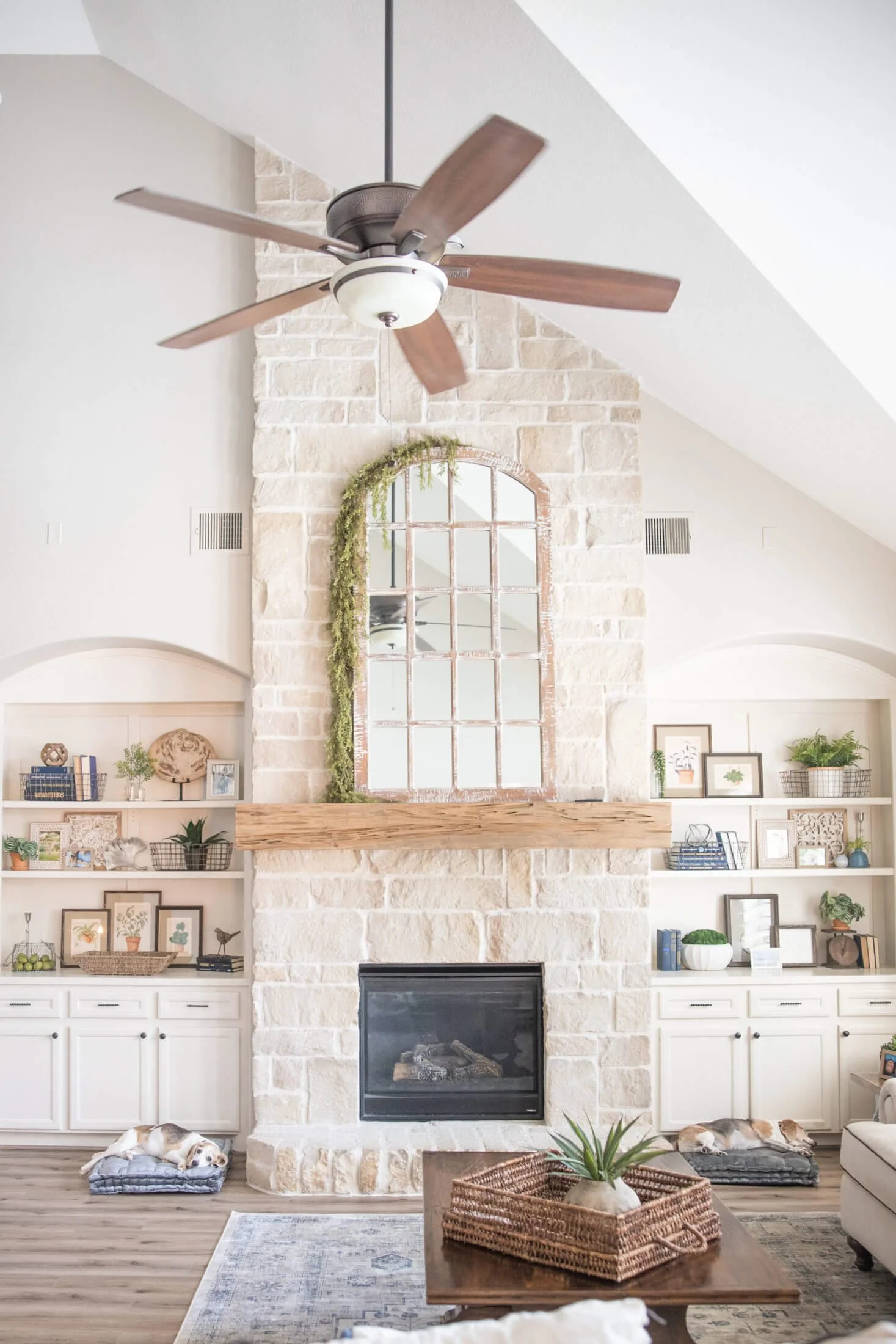




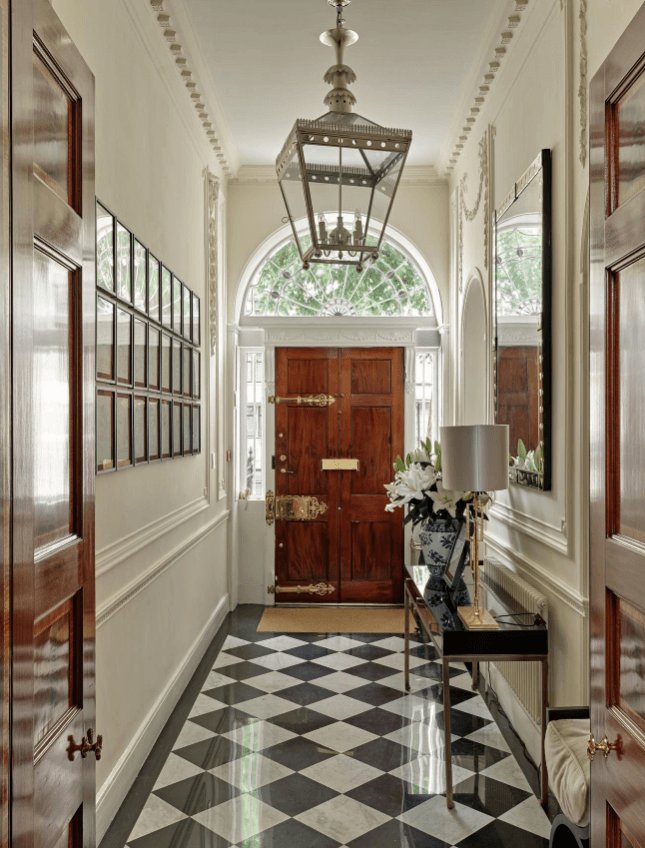


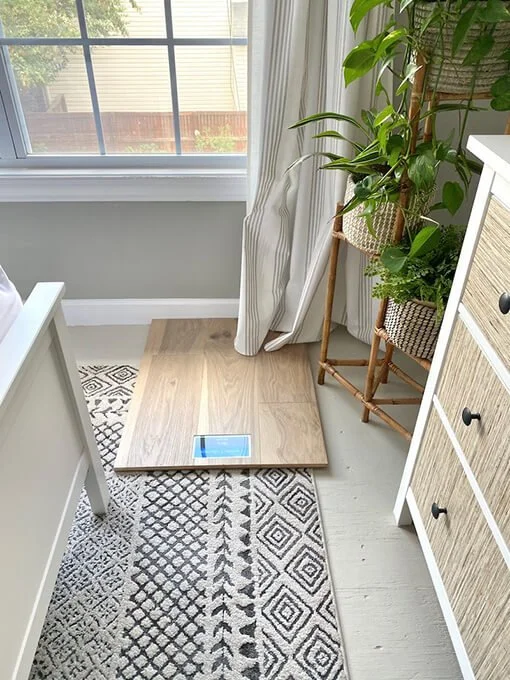




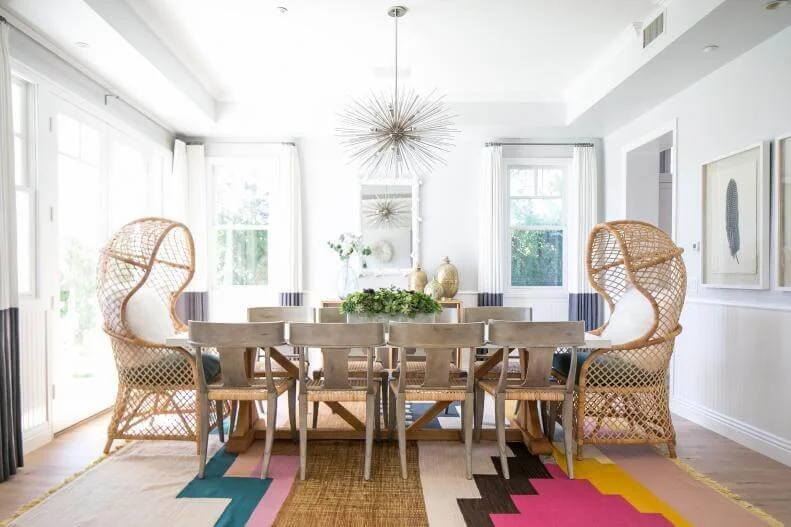


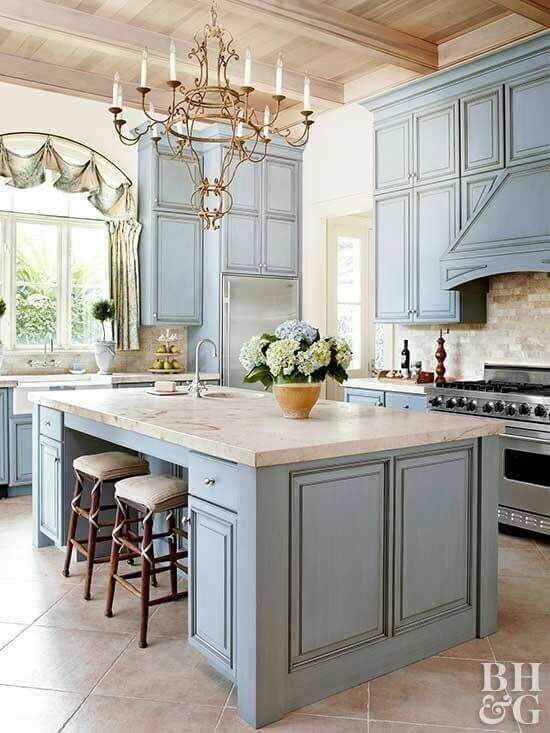



Looking for bedroom inspiration? Look no further than these romantic French country bedrooms. Get ready to be swept away by their charm and beauty.